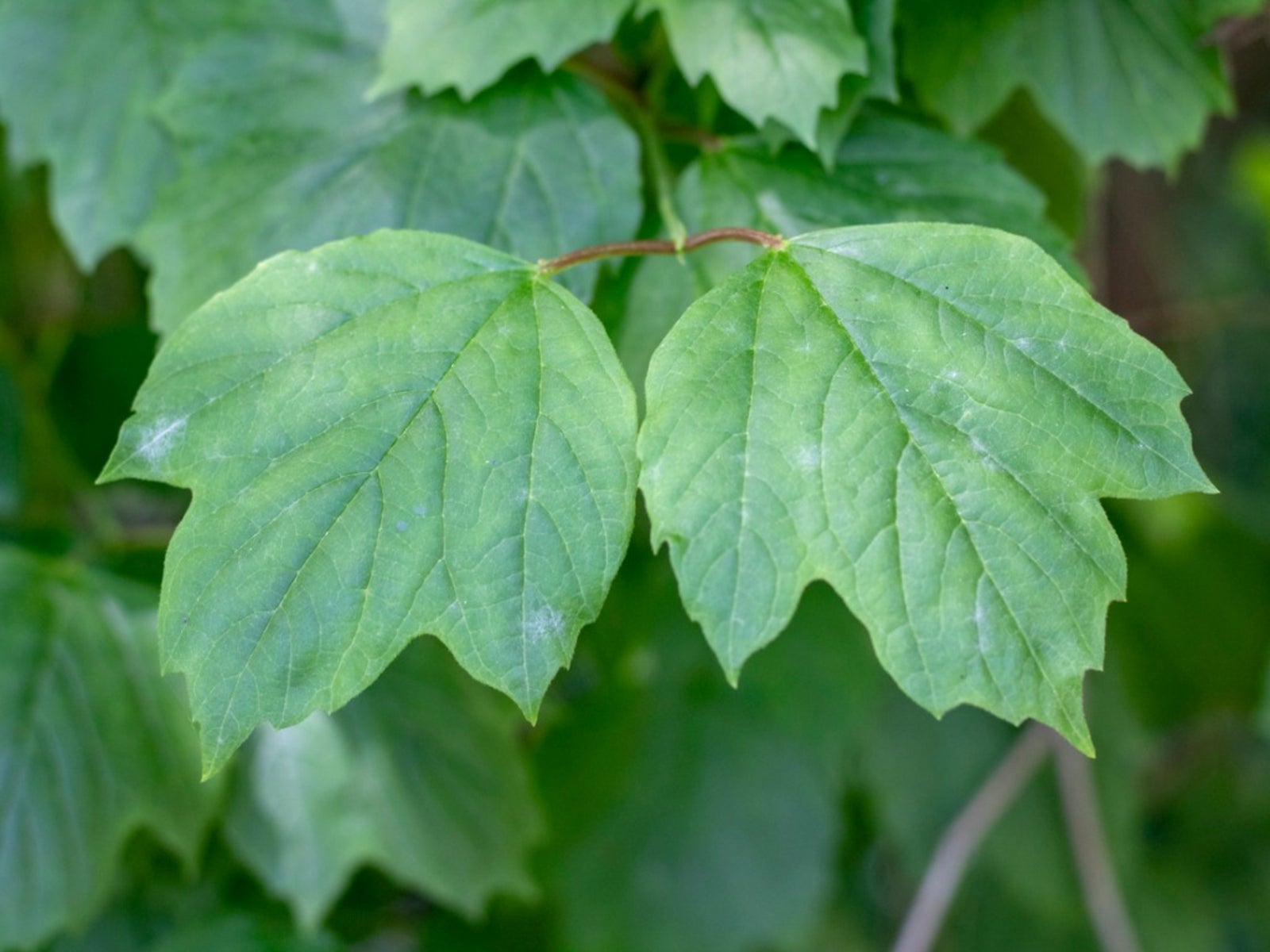Mapleleaf Viburnum Information – Tips On Growing Mapleleaf Viburnums


Mapleleaf viburnum (Viburnum acerifolium) is a common plant of Eastern North America on hillsides, forests and ravines. It is a prolific plant that produces a favorite food for many wild animals. Its cultivated cousins are often used as multi-season ornamentals and offer a host of beautiful changes over the year. Mapleleaf viburnum shrubs are hardy additions to the landscape and work perfectly in planned native gardens. Read further to learn how to care for a Mapleleaf viburnum and what surprises you can expect from this plant.
Mapleleaf Viburnum Information
Few plants offer both the statuesque beauty and constant seasonal interest as the Mapleleaf viburnum. These plants are easy to establish through seed or their abundant rhizomous suckers. In fact, over time mature plants form thickets of colonized young volunteers. Added to this is their drought tolerance, ease of care and abundant wildlife food, which makes growing Mapleleaf viburnums winning plants for the garden, with durable hardiness in most USDA zones. Mapleleaf viburnum care is almost non-existent once plants establish and provide useful color and wildlife food and cover. As the name would imply, the leaves resemble small maple tree leaves, 2 to 5 inches (5 to 12.7 cm.) long. Leaves are 3-lobed, dully green and with small black spots on the undersides. The green color makes way to a lovely reddish-purple in autumn, with the rest of the plant adorned by showy pea-sized bluish-black fruits. During the growing season, the plant produces cymes of tiny white flowers up to 3 inches (7.6 cm.) across. Mapleleaf viburnum shrubs can grow up to 6 feet (1.8 m.) tall and 4 feet (1.2 m.) wide but are generally smaller in the wild. The fruits are attractive to song birds but will also draw wild turkeys and ring-necked pheasants. Deer, skunks, rabbitsand moosealso seem to like to nibble on the bark and foliage of the plants.
How to Care for a Mapleleaf Viburnum
Plants prefer moist loam but can perform quite well in more arid soil conditions. When planted in dry soil, it does best in partial to full shade. As suckers develop, the plant produces a delightful stepped form, with layers of the airy flowers and shiny fruits in their seasons. Choose a site for growing Mapleleaf viburnums that is partially shaded and use the plants as understory greenery. They are also suitable for container use, as well as borders, foundations and hedges. In their natural range, they are quite attracted to lakes, streams and rivers. Use Mapleleaf viburnum alongside other dry shade plants such as Epimedium, Mahonia, and Oakleaf hydrangeas. The effect will be elegant and yet wild, with many different sights to capture the eyes from spring to early winter. In the early stages of the plant's growth, it is important to provide supplemental irrigation until the roots have established. If you do not wish a thicket of plants, thin out the suckers annually to keep the main plant in focus. Pruning doesn't enhance the form of the plant but it is relatively tolerant to cutting if you wish to keep it in a smaller form. Prune in late winter to early spring. When establishing a large space with this viburnum, plant each specimen 3 to 4 feet (1.2 m.) apart. The effect en masse is quite appealing. Mapleleaf viburnum has few pest or disease issues and rarely needs supplemental fertilizing. A simple organic mulch applied annually to the root zone provides all the nutrients you need for good Mapleleaf viburnum care.
Gardening tips, videos, info and more delivered right to your inbox!
Sign up for the Gardening Know How newsletter today and receive a free copy of our e-book "How to Grow Delicious Tomatoes".

Bonnie Grant is a professional landscaper with a Certification in Urban Gardening. She has been gardening and writing for 15 years. A former professional chef, she has a passion for edible landscaping.
-
 Looking For Plants To Give You The Soft And Fuzzies? Try These 5 Fuzzy Leaf Plant Options
Looking For Plants To Give You The Soft And Fuzzies? Try These 5 Fuzzy Leaf Plant OptionsLovers of texture, drama, silver foliage and tactile plants will adore these special sensory garden additions. These fuzzy leaf plant options will leave you all aglow
By Susan Albert
-
 Get Ready For A Summer Of Hummers! Grow These Full Sun Hummingbird Plants and Flowers
Get Ready For A Summer Of Hummers! Grow These Full Sun Hummingbird Plants and FlowersIf you’re lucky enough to enjoy a sunny backyard, make sure you are maxing out on your pollinator opportunities and grow these full sun hummingbird plants and flowers
By Tonya Barnett